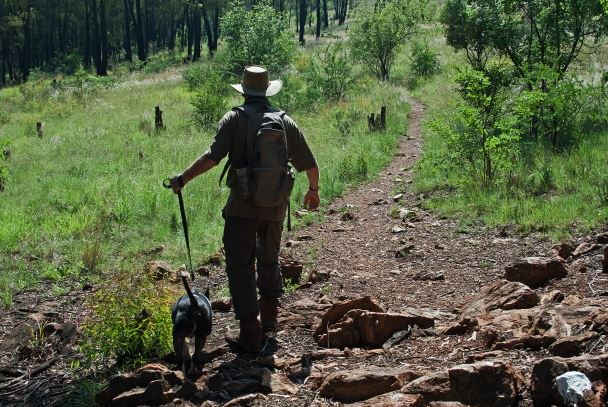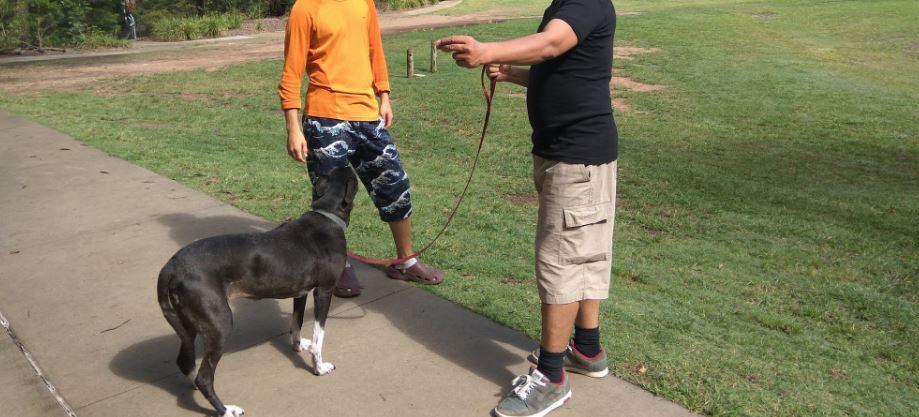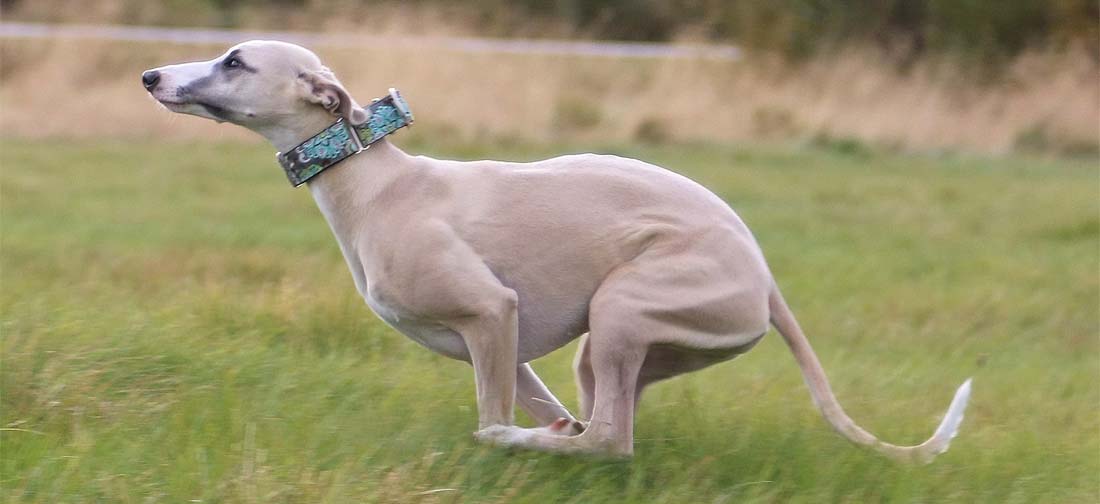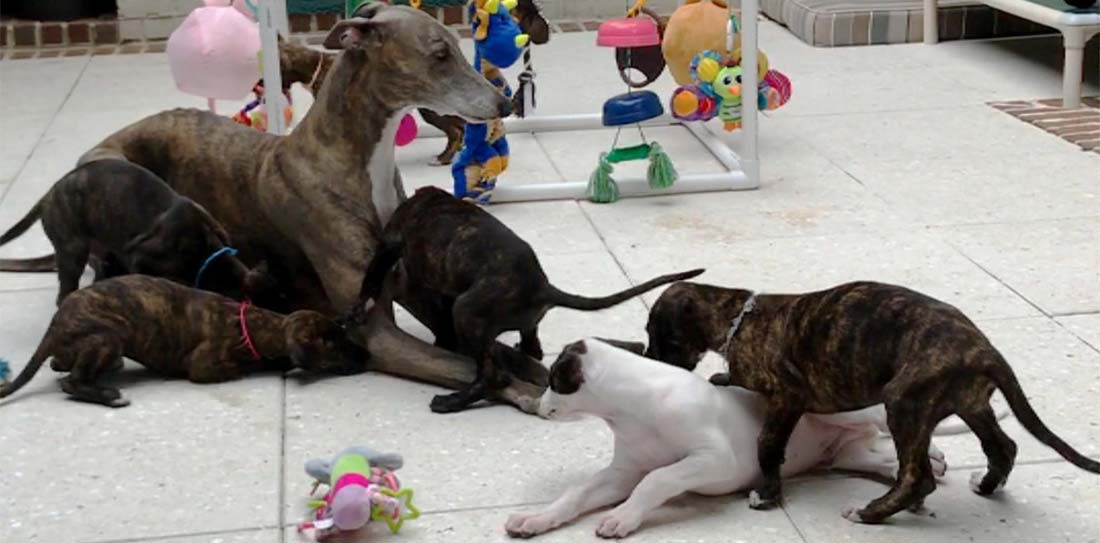Devereux whippets
Things To Do When Taking Your Dog On A Walking Tour
Well, dog lovers understood how important dogs are. They are one of the most caring pets you can have. They protect your home and keep you company. Besides, owning a dog is one great way of keeping fit, especially if you play with the dog often. You will be forced to go on walks with your dog, once in a while. Isn’t this fantastic? It gives you a chance to have a stronger bond with your dog. A dog can be a great friend, depending on your relationship with it. It is normal to go on short walks with your dog. The challenge most people have is going on long trips with their dogs. Most people tend to leave their dogs behind any time they have a long trip. This is because they imagine the additional effort required to accommodate the dog throughout the journey. Taking your dog with you on that multi-day walking tour doesn’t need to be complicated. You only need to do a lot of planning for it to work. It is not something you do abruptly because you might find yourself going back home without accomplishing your purpose. If you do prior planning, you will be surprised at how exciting and fulfilling your trip can be. Below are some of the things you need to keep in mind when it comes to travelling with your dog.
Food
Food is a very critical component when you are doing the planning. Your dog needs high-calorie food that will give it the energy it requires to make it through the whole trip. It is essential that you set money aside to buy the dog’s food. Nowadays, there are a number of companies that deal with high-quality food for dogs, with some being naturally dehydrated and others freeze-dried. By the time you go for the trip, you should have already mastered your dog’s caloric intake so that you carry sufficient food. Note that while on tour, your dog will consume two or three times more food than they usually consume at home. This is why you need to organise yourself before the trip. Don’t just assume that you will find dog food while on your trip. On the contrary, you might not even come across any pet food store. Keep in mind that dogs also add and lose weight very fast. It is, therefore, good to have snacks to give the dog throughout the day. You don’t want your dog to lose too much weight by the time you get back. Lastly, it is good to carry some water for you and the dog. It is advisable for both you and your dog to remain hydrated.
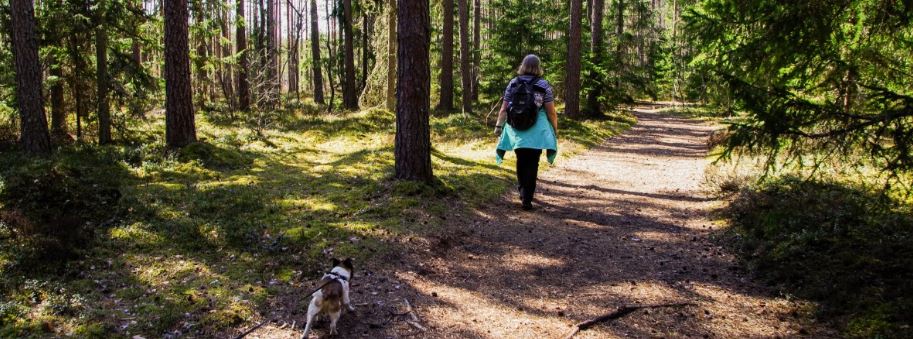
Age
As much as you love your dog, it is not wise to take a very young dog on a long trip. Age is essential when determining whether you should take the dog along with you. Taking a very young dog for a long trip may cause them to strain a lot and may cause a lot of stress on their bones, joints, and muscles. You don’t want your dog to experience this. However, if the dog is young but fit or it is used to taking long walks, you may consider taking it with you. Before the month that you set to go for the tour, it is good to incorporate pre-trek training for your dog. This should involve them climbing rocks and walking on concrete and rough roads. Pre-training is great because it prepares the dog psychologically, and it also toughens the dog’s pad. Monitor the progress of your dog during the pre-trek training so that you determine whether the dog will be able to manage the challenge.
Gear For The Dog
If you are planning to take your dog for the trip, it is required that you take into consideration all the things that the dog will need. This ensures that the dog is cooperative and comfortable during the trip. Note that if the dog is not comfortable, you will not be able to enjoy your time. Carry all the essential items that the dog might need, such as a collar, which should have an identification tag, a backpack, and a rain jacket. You could also carry their favourite chew toy to keep the dog busy. In case it rains, at least have a rain jacket for the dog. You don’t want your dog to get sick along the way. Note that some wild plants might make your dog sick if they happen to consume them. Since you might not be able to monitor the dog all the time, it is vital that you carry your first aid kit. Hydrogen peroxide is used to encourage the dog to vomit, in case the dog consumes something dangerous.
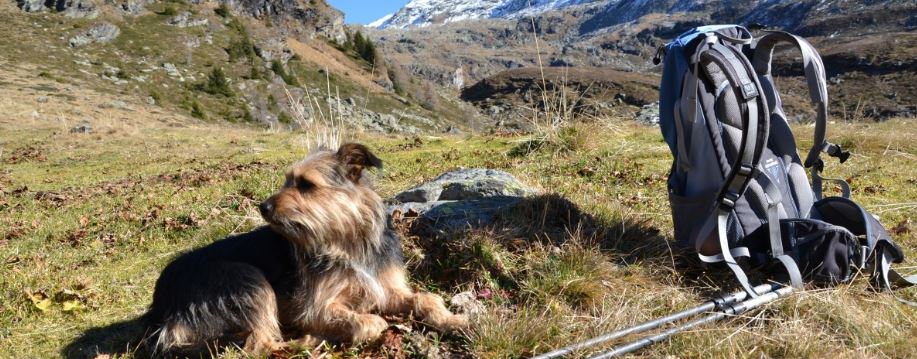
Observation
While on the trip, understand that it is your responsibility to take care of your dog. You should know when the dog is okay and when it is troubled. Ensure you frequently check up on your dog. Your dog may not be able to tell you when something is wrong. Take some time every day to examine their pads and see whether they are okay. Thoroughly inspect whether the dog has ticks. Ticks may make your dog weary and uncomfortable. If you want your dog to have a good time, spare your time every day, and confirm that the dog is healthy. Also, while you are on the trip, it is essential for the two of you to be together all the time. Don’t allow the dog to wander too far away. Remember, both of you are a team, and you have a goal to accomplish. Be flexible and open-minded because you may be forced to take several breaks if the dog is not able to keep up with the required pace.
Taking your dog on a walking tour might seem daunting at first. However, if you can plan earlier by training the dog, purchasing the right dog food, and getting all the required equipment, it becomes easier and fun. You shouldn’t dismiss having a trip with your dog because you might be missing a significant moment. Trust that your dog can do it and get ready to have a good time.
Reasons A Trainer For Dogs Is Important
Training your dog is one of the most important aspects of keeping your dog’s behaviour in check. It is an important component of being a good pet owner. Without proper training, your dog is likely to misbehave and act entirely on instincts. This is not something that you will want to deal with as a dog owner. Below, we will be going over some of the reasons why it is so important to invest in a trainer for dogs.
Reasons To Invest In A Trainer For Your Dog:
1. Proper Socialisation
One of the main reasons it is so important to invest in professional dog training is the ability to ensure that your dog gets the proper socialisation with other animals and people. A dog that is not taught how to act around other dogs and people is likely to lack an understanding of how to behave. It is important to train these behaviours because they might develop undesirable behaviours such as acting aggressively towards other dogs, jumping on people, and more. With the proper socialisation with other dogs and people, you can avoid these undesirable behaviours completely.
2. Achieve A Greater Bond
A trainer is a great way to ensure that you are able to develop a special bond with your dog. Without professional trainers’ assistance, you might find it difficult to develop a good bond with your dog because you need a good amount of training time to really develop mutual respect and love with one another. Your dog needs proper direction and guidance. A trainer will be able to help you display authority and help you become the ‘pack leader’ for your dog.

3. Correct Behavior Problems
When you don’t have professional training guidance, you will likely find it very difficult to correct behavioural issues that your dog displays. Training is something that requires a lot of consistency and repetition to really achieve desirable results. By having a professional trainer’s guidance, you should be able to correct even cemented behaviour issues that your dog has which can help your dog become a better companion and you become a better owner.
4. Help Deal With Distractions
When you train your puppy or dog at home, they are in a comfortable environment with minimal distractions. By training your dog with other dogs and people around, it is going to simulate a real-world experience. After all, you want your dog to be able to focus on real-world situations and to adhere to your commands in these respective situations. That is why you want to invest in professional training with other dogs and dog owners. This way, your dog will be able to have training practice in situations that will simulate real-life conditions with a lot of distractions.
5. Deal With Biting
Biting is something that you want to limit as much as possible. After all, as a dog owner, you are responsible for bites. Not only are you liable for bites, but it can cost your dog their life. Because of this, you want to get professional help to ensure that your dog eliminates their biting habits or response. That way, you can keep your dog safe and minimise the risk associated with your dog biting someone.
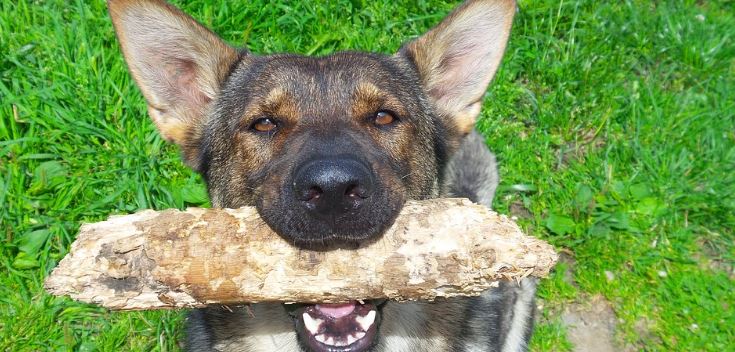
6. Minimise Potty Mistakes
Whether your dog is young or old, you want them to know when and where to go potty. A professional trainer is going to be able to help you implement the right kind of environment to minimise these mistakes and they will be able to correct any issues that might be causing your dog to go potty in your home.
7. Learn Commands
Teaching your dog commands is not something that is easy. After all, it requires a lot of attention to detail, perseverance, repetition, and consistency. A trainer is going to be well suited to helping you teach your dog essential commands such as recall which can really save your dog from a lot of dangerous situations. Being able to recall your dog at any point is crucial to keeping them safe. A trainer will help you effectively teach you how to direct these commands and how and when to reward your dog for responding to them.
Overall, there are so many reasons professional dog training is worth the investment. It is going to give you the best opportunity to help bond with your dog and to keep you on the right footing with your dog. It is important to get started with training early on in your dog’s life because they will develop habits and behavioural problems early on if they are not trained young. However, you can train any dog no matter their age. Therefore, don’t think it’s too late to train your dog to correct behavioural issues if they are exhibiting them at a later stage in life.
Fun Facts About the Whippet
Whippets are an incredibly popular breed of dog, though they are often confused for greyhounds. Admittedly, the two look very similar, but whippets have their own unique attributes that set them far apart from their greyhound cousins. In fact, there is a lot that many people simply don’t know about the whippet. Continue reading for seven fast and fun facts about this spectacular breed.
They’ll Sleep on the Furniture
Whippets are known for hating hard surfaces, especially when lying down, so expect to see your canine companion dozing on the couch or bed.
They’re Not Fond of the Cold
Whippets are thin pups, standing at around 20 inches tall and averaging about 30 pounds in weight. Their fur is also very short, making them not exactly suited to ice-cold temperatures.
They are Couch Potatoes that Love to Run
There are two things in the world that delight whippets more than anything – sleeping and running at full speed. Whippets are often bred for the purpose of coursing or racing, but once they are tuckered out, they will sleep for hours!
They’re Great Additions to Families
Whippets are notoriously even-tempered and calm. Many of these dogs happily live with children, cats and other animals without incident, though they may take to chasing the cat around the house – just for fun, of course.
They are Not Great Protection Dogs, However
These dogs are not aggressive and are very clingy to the few people that they live with. If you’re looking for a dog that will lunge and bite, you might want to look at a breed other than a whippet. The only damage these dogs are likely to inflict is a welt caused by the rapid-fire wagging of their tails.
Their 18th Century Nickname is “The Poor Man’s Racehorse”
In Great Britain in the 18th century, whippets were popular for races involving the snapping up of rabbits, also known as “snap dog contests.” During the Industrial Revolution these races became a bit more refined, with the dogs chasing a flag down a runway. This is when the whippet earned the nickname of “the poor man’s racehorse.”
They Can EAT
Though the whippet is a slender breed, they can put food away like nobody’s business. Make sure to keep any food you don’t want them having completely out of reach. Otherwise, they will find a way to get it!
All in all, whippets are incredibly fun family dogs that will make anybody feel grateful for their existence. Their mild-mannered nature and love of snuggling up to people make them great for cozy days in the house, while their fondness of running means that they are exceptional racing dogs.
Helpful Tips for Raising Happy Whippet Pups
Whippet puppies, like puppies of any other breed, require a lot of care, responsibility, training and routine to be raised into happy and well-adjusted adults. As your pup grows up, you’ll want to take these tips into account to ensure that they are their happiest in your home.
Routine Grooming of Your Whippet
Whippets have very short fur that is quite velvety to the touch, so they are remarkably easy to keep clean and fresh. Unless they get into something sticky or otherwise stubborn to remove, a quick once-over with a damp chamois will keep their fur and skin in great shape. If they have gotten into something that they shouldn’t have and can’t be removed from their fur with a chamois alone, only then should they be given a bath.
Brushing your whippet is a simple matter of using a firm bristle brush. Most whippet owners do not need to have extensive grooming supplies (like different brushes) due to the short length of their dog’s fur.
Keep an eye on your whippet’s nails, as they can grow too long and cause problems when they walk or if their nails get stuck on something.
Where to Keep Your Whippet
Whippets are not ideal outdoor dogs, not by a long shot. While they will certainly love a good sprint through the yard or a field, their ideal place to be is snuggled up on the couch with their humans. Their skin is remarkably thin and since they do not have a thick layer of fur to protect their bodies, they can become injured rather easily. Minimize this risk by having them inside when not exercising.
Their thin skin and short fur also contribute to the whippet’s hatred of cold temperatures and rain. When the weather is inclement, keeping your whippet inside is the best course of action.
Exercising Your Whippet
Though whippets should be spending most of their days indoors, they benefit greatly from short periods of time where they can expel their energy outside. 40 minutes at a time, about twice a day, should be suitable for getting your whippet some much-needed exercise. As sight hounds, they love to give chase to an object, so any kind of play that could facilitate this impulse is ideal.
Because whippets love to chase, it’s best to avoid having them run where they have access to roads. Whippets can be vulnerable to getting hit by cars because it is in their nature to go after them.

